As an Amazon Associate I earn from qualifying purchases.
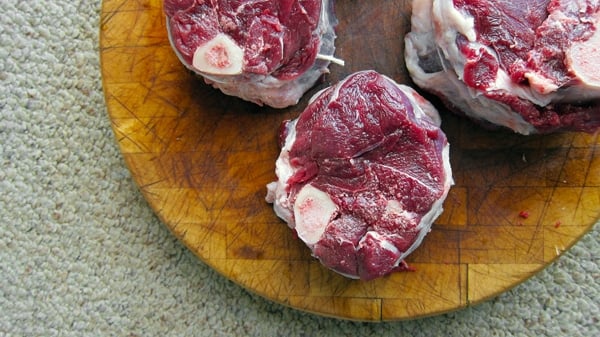
I don’t think I go a month without someone asking me about food safety and wild game, and by far the most common questions are about trichinosis, notably in relation to wild boar and bear meat. I’ve studied this issue for several years, and I find no real issue — provided you know a few ground rules. Allow me to lay out what I know to hopefully put your mind at ease.
Let’s start with what we’re talking about. While it is certainly possible to get food poisoning from wild game, it is actually quite rare for people to pick up E.coli 0157, salmonella, toxoplasmosis or brucellosis from game meats. And when it does happen, the cause is usually related to contamination by the hunter or whomever dresses and processes the meat.
The more pressing concern is trichinosis, a condition you develop from eating still-active larvae of the trichinae parasite, which lives in the flesh of primarily carnivores and omnivores, although there are a few stray reports of it occurring in deer. Note my use of the phrase “still-active” in that last sentence; it’s important and I will explain below.
As it happens, the trichinae parasite is extremely rare in wild game and it is even more rare for anyone to become sick with trichinosis from eating game. According to a Centers for Disease Control study that surveyed incidence of the disease from 2008 to 2012, there were only 84 cases of trichinosis in all of America. Of those, 43 were eating wild game. That’s 43 people in a five-year period, and 30 of those 43 were in one incident, an unfortunate party I’ll describe in detail later. Consider that number when you think of the millions of people who eat wild game every year.
Of course, if you are one of those unlucky few, trichinosis is not to be trifled with. A heavy dose of antibiotics will indeed cure the symptoms — diarrhea and nausea, muscle pain, weakness, even nervous system and heart problems — the larval cysts (pictured at right) will remain in your muscle tissue — meaning that if someone were to eat you, they’d get trich, too. Trippy, eh? Oh, and if you never seek treatment for the illness, it can be fatal. Bottom line is that trich is no fun.
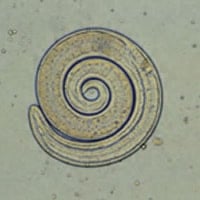
It is a fact that bear and cougar meat are the most prominent vectors for trichinosis in North America. Pigs, which are what most people think of when they think of trich, are actually not commonly infected. Trichinosis from domesticated pork is all-but absent these days, which is why the USDA — an organization well known to be overly cautious and is believed by many to be scientifically suspect when it comes to meat safety in the real world — dropped the “safe” cooking temperature of pork from 160°F to 145°F in 2011.
Wild pigs are a bit more of an issue. Depending on what state you live in, the incidence of infection varies. One study showed a 13 percent incidence of trichinae parasites in North Carolina, which is more or less the commonly agreed on rate of infection. Interestingly, other than two freak appearances of the Eurasian Trichinae pseudospiralis, which shouldn’t actually exist in North America, Texas hogs appear to be largely free of the parasite, according to this research.
And guess what? According to that CDC study I linked to above, only six cases of trichinosis were tied to eating wild pigs. Six. In five years. You have a better chance of getting struck by lighting on a boat, falling over and then being eaten face-first by a shark.
Bear meat, not pork, is the real problem. (As is mountain lion meat, but only a very few people eat that.)
Bears appear to be heavily infected by the parasite, so much so that you should assume the meat is infected. In that CDC study, 41 of the 84 total cases of trichinosis reported in America between 2008 and 2012 were from bear meat. That is still a tiny fraction of the thousands of people who eat bear every year, but it’s enough to warrant further discussion.
Some bad news: There is not just one trichinella parasite. There are many. Here in North America we have five major species: Trichinae spiralis, which is the most common and hangs out with pigs for the most part; then T. nativa, T-6 and T. murrelli, which are almost always found in wild game — chiefly bears.
There is a wide body of research covering T. spiralis, and it is this research that produced the admonition to freeze meat for a month before eating it raw or undercooked comes from. Specifically, it assumes that if you freeze wild boar or some bear meat for 20 days at 5°F or lower the parasites will be rendered inert.
Note that freezing will not kill them, but it will prevent the wee beasties from attaching to you. Keep in mind that the 20 days start when the core of the meat reaches 5°F, which can actually take several days in most freezers. That’s why I freeze for at least a month with bear or wild boar I plan on making into salami, just to be sure. All of this applies to T. murrelli, too.
You can also kill any trichinae parasite by heat. And the “kill temperature” is a helluva lot cooler than you might think. The origin of the odd USDA mandated internal cooking temperature of 160°F appears to be the government trying to account for inaccuracy and idiocy. (That temperature is more relevant for salmonella than trich.) The actual temperature that kills the trichinella parasite is 137°F, which happens to be medium-rare.
But be forewarned: Every iota of meat must hit that temperature to kill the parasite, and cooking bear meat to medium-rare isn’t a guarantee of that. In fact, Steve Rinella and his crew ate rare bear meat in Alaska recently and most of them got trichinosis. Steve did a video about the experience here.
You can certainly make medium-rare bear meat safe using the sous vide method, but you’d need to hold the meat at 137°F for an hour or so to make sure — and then you’d want to sear it on the outside to kill any possible bacteria that survived that low temp. As for me? I like to sous vide bear at about 145°F for an hour or more, which is still a lovely tender and pink piece of meat, and is safe to eat that way.
Unfortunately, the two trichinella species most associated with bears are immune to freezing. These are T. nativa, the Canadian and Alaskan species, and T-6, the dominant species of parasite from a line stretching from about Washington state across to Maine down to the Rockies, the Great Plains, the Midwest and the Northeast — really where all the good bear hunting is. Only southern states appear to be immune to this species. (Here is a map from a Stanford study.)
The CDC survey noted one particularly nasty outbreak of trichinosis, interestingly in my home state of California, in 2008. Thirty of 38 people eating undercooked black bear got the disease. It is the first known occurrence of humans picking up trich from T. murrelli in America; this is the easily killed strain that likes our warmer states. Everyone who got the disease ate either undercooked or raw (?!) black bear meat at a party.
This is an excerpt from the investigation:
Interviews revealed that the bear had been legally hunted a few days before the event in a mountainous region in California about 100 miles east of Humboldt County. The bear was reportedly lying down when shot and appeared to be sick; it was butchered on a table that was later used to serve food. Raw dishes were prepared with chopped meat, and cooked bear meat dishes included stir fries, lentil-based stews, and rice/meat mixtures.
Clearly there are all kinds of food safety issues going on here, and the tragedy is that they technically could have made their raw bear dishes had they frozen the meat for a month first — the strain of trichinae that attacked them can be rendered inert when frozen.
Finally, let me address the making of salami and other cured meats with wild boar and bear.
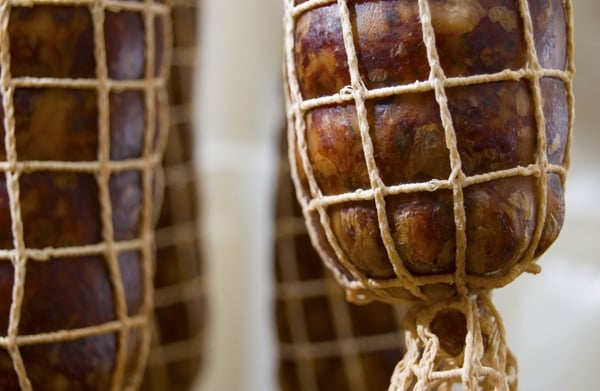
Obviously these are, for the most part, not cooked. So how can they be safe? Culinary Science Professor Bob del Grosso says the exact mechanism is hazy, but this is the working theory:
The literature is a bit unclear on how this works. However, it suggests that it is not the salt that kills the larvae, it is protein-digesting enzymes released by fermentation bacteria. I suspect that what happens is more complicated and looks something like this: The salt lowers the water activity of the meat, which means that less water is available to the larvae. The fermentation bacteria produce acid which also lowers the water activity while the acid wrecks the metabolism of the larvae which, like many living things needs to be close to pH 7 (neutral) to work properly. All of that, plus the enzymes, toxic oils from the herbs, etc. plus nitric oxide from the nitrate, beat the hell out of the trich.
All these processes going on should prevent you from actually getting trichinosis, which is why people have been safely making salami with wild and domesticated pigs for 2000 years. But you need to be a careful curer of meats and not take shortcuts.
The key figure here is at least 2 percent salt by weight of the total meat and fat. So if you make a 5-pound batch of salami, as I often do, you will need at least 45 grams of salt to be totally safe. I tend to use a bit more, like 50+ grams to get close to 2 1/2 percent by weight. (Here is the relevant study of this.)
Now here’s the caveat: While there has been lots of study done on salt curing and T. spiralis, there’s been almost nothing done on salt’s effect on the other species of the parasite. So it’s all deduction when it comes to bear charcuterie. Wild boar charcuterie should follow the same guidelines as those for domesticated pork, because they have easily killed strains of the parasite. Even though may not think you need to, out of an abundance of caution, my advice is to freeze wild boar and bears shot in warm-weather states before starting your salami, and to avoid straight-up salami with bear meat in colder areas — unless the meat is cooked somehow.
So that’s what I know. To sum up:
- Most wild pigs don’t have the parasite. But since trichinosis is no fun, it’s best to freeze your meat for 30 days to a month just to be sure — then you can eat it like domestic pork, which is to say a nice 145°F at the center.
- For salami, you technically don’t have to freeze wild boar, so long as your salt concentration hits 2 1/2 percent and you cure the meat for at least two weeks. But freezing isn’t a bad idea. Finally, for bear, best to cook it through no matter what you do, unless you are in the South, in which case freeze and treat as pork.
- Use common sense. A great many of the illnesses hunters and game processors do contract are from contact with the innards/blood/infected parts of the animals. If you have any cuts on your hands at all, wear gloves to gut and process your animals. And if you nick yourself, wash with soap and water and get a glove. And if you don’t nick yourself, wash with soap and water afterwards. I know, I shouldn’t have to say that, but several case studies I read involved people gutting a pig and then going out for a sandwich. There was stuff on their hands and they ended up eating it with their burger. No bueno.
Nothing you do is without risk. Eating is no exception. I hope this allays any undue fears about getting trichinosis from wild game. Follow a few simple rules are you should be fine.

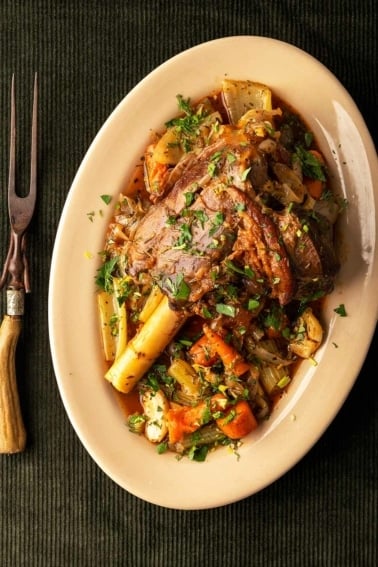
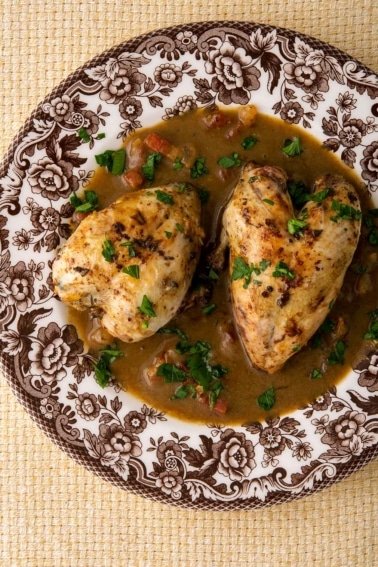
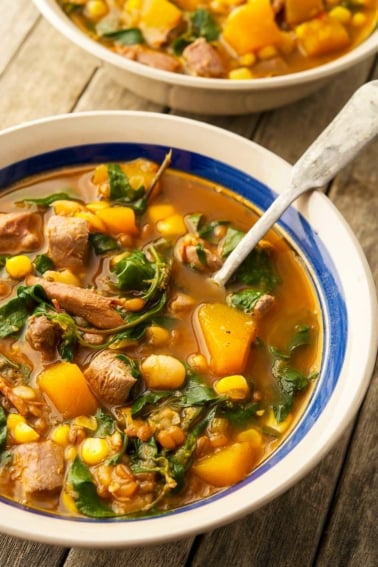
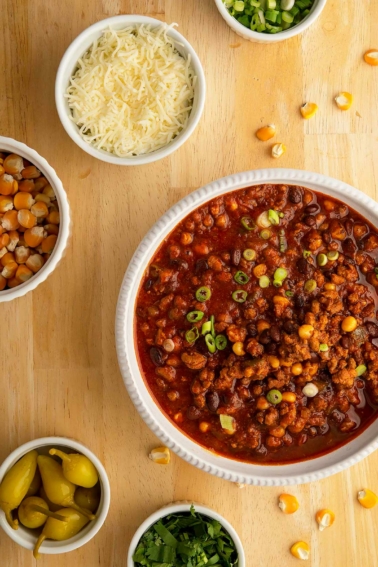
This is a great article. Concise and accurate. I really appreciated it. My grandparents lived in the Salmon River country of the Trinity Alps. They ate bear, deer etc. They had no freezers because of no electricity. They ate their meat either fresh or canned. The canned meat was not problem due to the heat process. The fresh bear she always braised (pot roasted) with a rich gravy along side root veges from her garden. I guess
In regard to salt content: You give weight of meat in Lbs then change horses and give weight of salt in grams (instead of ounces).
Bob: Yeah I always do that because grams is more precise, and in these cases, precision really matters a lot.
This article was very informative, thank you for SHARING your knowledge
Great article. Very informative. I just came back with a bunch of hog meat from Texas as well this past weekend and was wondering of some of the diseases or to make sure it’s safe to eat. Do you guys know if there is any way to test this meat somewhere?
Hank,
Great article. I just finished cutting up my first boar (kill to table all myself). This topic was discussed in detail while we were cutting up the boar. Since it’s a Texas pig seems like the risk is low but I definitely now intend to get my meat down into the coldest spot in my deep freezer and ensure proper cooking, which happily is much lower than the 160-180 the others insisted on. Again thanks for the information!
Thank you for the very informative article I have lots of dogs and occasionally kill a cougar that is killing my sheep. I’ve been drying the cougar like beef jerk then feed it to the dogs. Now I’m concerned that this might not be sufficient. I’m not sure how warm my dehydrator gets but I do not think it gets to a hundred and forty degrees. What are your thoughts?
I also occasionally have fed raw cougar to my dogs. If they do not show any signs or symptoms of sickness is it a good chance they are not infected. Would I know if they are infected?
Paul: I have no idea, but I imagine it would be the same for dogs as people. I might check with a vet.
What if i just cold smoke to cure the meat? will that be enough too safely kill any and all tric.
John: No.
Hank,
Thanks for the article – informative as always. I have a question about trichinosis existing in the fat of an animal, or is it just in the muscular tissue?
I ask because I recently acquired 50 lbs of domestic, free-range, organic hog backfat. It’s awesome stuff! I rendered a whole lot of it down into lard, but also saved a bunch to grind into future sausage, burger, etc.
Since these hogs were allowed to freely roam and root around in whatever they pleased, the question that comes up is if mixing in the backfat, and then cooking my 4th of July burgers to medium rare or less is a mistake? Can trichinosis exist in the fat, or no?
I’m not overly concerned, but just wondering.
Thanks for all your work. Happy 4th!
Nick: I am not 100% sure, but I think it can. But trich in domestic hogs is pretty rare these days.
Good morning..living and hunting in Georgia we have plenty to shoot at year round. Fellow hunters and myself have come up with a idea for wild pork and would like your thoughts…Our wives do lots of vegetable canning and we have proposed the following
Clean and debone the animal completely slicing all meat into strips about as big and long as a good 8″ hotdog. Grill all meat on a hot fire for a few moments to add taste then pack into quart jars and pour in your favorite barbeque concoction with vinegar and put it through a canning process of pressure cooking for 40 min with 15ounce weight on the cooker WHAT YOU THINK??? When opening the jar us any way you like B,L,Dinner hot or cold.
Norm: I think that would work in principle, but I am not sure on the pressure canning specs. 40 minutes doesn’t seem like long enough. But it might be, who knows? Check comparable recipes from reputable places like Presto or the All American Pressure Canner or USDA or somesuch and use those a guides.
Hi, would you feel it is safe to cook unfrozen (2 days refeigerated) wild boar sous vide at 145 for 2.5 hrs then to be pan seared? Thanks, and love the article!!!
Jason: Yes… but a tender cut cooked sous vide, say a loin, for 2.5 hours, will get weirdly mealy. I would cook it like that maybe 1 hour and then sear hard.
Hello Hank!
I’m planning a black bear hunt for spring and would like to cure some of the meat, meaning to place it in salt and hang it or store it in the fridge for some months……maybe cold-smoke it. Have you ever tried to do that? According to what I read here the process of curing it should be sufficient to kill trich?
Hank, you wrote “Thad: Uh…. duh. Of course wild game has a higher trich load than store-bought meat. Thus this article. My point is that it is still pretty low, and even lower if you take precautions.”
I guess my point, is that it is not pretty low. If the trichinosis infections are 1/4-1/2 of those in the US, it is significantly higher infection rate. Let’s suggest that wild game makes up 1/10 the US meat consumption (this is probably very high, but makes the math easy). This would mean the infection risk is 2.5 to 5 times higher for wild game.
Either there is a higher base risk or hunters are systemically undercooking their meat and getting diseases. If McDonalds were to have an infection rate 2.5 to 5 percent higher than all other food, it would be shut down.
I am not saying to avoid wild game, but that the interpretation that it is pretty safe is not true, when the amount consumed is considered.
Thadd: It’s all in your interpretation of risk. Trich is non-existent in store-bought meat these days, and literally millions of pounds of venison and hundreds of thousands of pounds of wild boar is being eaten in the country every year. The number of cases, given that, is impossibly small to me, and, I might add, most people. But if this is still too high for you, cook accordingly.
Hank,
Great article. Some state fish and game agencies will test the meat. Montana FWP provides this service and reports that trich only occurs in 15% of all harvested bears.
USDA-Wildlife Services has been testing feral swine in every state where they occur for a multitude of diseases in feral swine including trich, brucellosis, and pseudorabies. Don’t have the link, but you can find some of the results by county for each state online or by contacting them.
Dave-O,
I brine the frozen meat until completely thawed like overnight I smoke it at around 200 degrees until the internal temperature is 160 degrees. Usually three to five hours depending on the size of the chunk. I find the brine to be an added precaution against little nasties and it also keeps the meat tender when cooked to higher internal temperatures. I give a lot away and would hate to get anyone sick.
Question for Hank: I understand that CJD variants or prion disease is not found in porcine species. Is this correct?
In Belgium (I think in all EU) the law requires testing of wild boar meat on trichinosis before commercial use (sale, restaurants). No analysis required before personal use of the meat, but it is strongly recommended. Only very occasional infections the past years, but the threat remains. Every year the forestry department collects fox carcasses in hunting season, as an extra way to test for trichinosis occurence (amongst other possible diseases/parasites).
Confused smoking as normal after freezing
I didn’t see ant respose as to what temp I always freeze 2-3 months the one I’m doing today been 2 years so can I smoke till internal temp 147 for at least internal fir 1-2 hours??? Help!!!
Dave-0: I’d smoke to a higher internal temperature, say around 150 degrees.
Hank, great article, but I have to disagree with your interpretation of the statistics.
While those numbers are low, they do suggest a high parasite load in food consumed by humans. According to the report you site, 51.2% of the cases of Trichinosis in the US come form wild game. If you remove the 30 cases from the party as a potential outlier event, you still have 24.1%. (13 cases out of 54).
That suggests wild game is responsible for between one quarter and half of the trichinosis diagnoses in the US. There are a number of explanations one could hypothesize for this statistic:
1) The amount of trichinosis in wild game is statistically equal to the amount of wild game eaten. Wild game makes up much less than 25-50% of the meet eaten (by volume, weight, serving, or meal I would guess). This leads me to reject this idea.
2) People who eat wild game are less likely to take measures to kill the trichinosis parasites. This is a possibility, and something that could easily be changed through education.
3) Wild game has a higher load of trichinosis than domestic animals. This cannot be eliminated, and makes some sense when we look at the statistics behind the drop in parasites in domestic pigs vs. the 13% infection rate you cite in wild pigs. For this to lead to infection people still need to under cook wild meat, but not necessarily at a higher frequency that people eating farmed foods.
The answer in any case is to continue to cook meat. Unless there is other research out there, I would suggest that people who eat wild meat are becoming infected more than those who eat domestic food.
Thad: Uh…. duh. Of course wild game has a higher trich load than store-bought meat. Thus this article. My point is that it is still pretty low, and even lower if you take precautions.
Thanks for response
I will flat always freeze for 2 months
Can I smoke it to internal low as your 140
Or must go 180???
Would like to not drive out so much
So
Freeze then smoke to 140 ok??
Just to be clear for Alaska bear meat. Kabanosy, yes. Landjager, no. Tragedy. Any idea on the occurrence of Trichinosis in Brown/Grizzly Bear?
Jim: There’s no good data on it, but I’d bet $1000 it’s pretty high.
I’m an avid Boar Wild Hog Hunter in Northwest Florida always freeze for 2-3 months. Any info on care and handling for smoking Wild Hog after freezing?
Dave-o: Once you have frozen it, you can smoke as normal. And if you don’t freeze, all you need to do is get the center of the meat properly cooked and you’ll be fine.